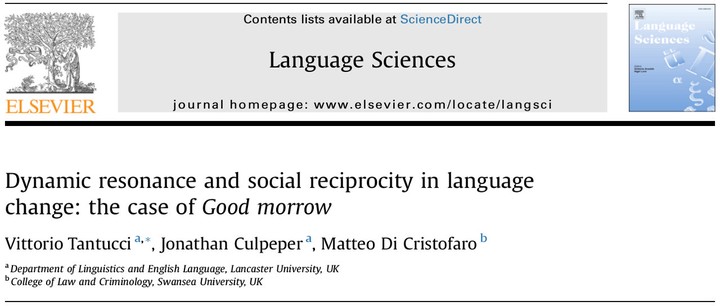
Abstract
Entrenchment (i.e. Langacker, 1987) does not necessarily lead to predictable behaviour. This study aims at complementing the usage-based model of language change by operationalising the role of dialogic creativity as a mechanism that can be in competition with conventionalization and grammaticalization. We provide a distinctive collexeme analysis (i.e. Hilpert, 2006) focussing on the constructionalization of the dialogic pair [A: good morrow B B: (good) morrow (A)] from the 15th up to the 18th century. After reaching the highest degree of entrenchment and automatisation, the dialogic pair will show an increasing tendency to be creatively re-modelled with ad-hoc meanings during online exchanges by means of dynamic resonance (Du Bois, 2014) and non-reciprocal behaviour. We define this creative process of large-scale alteration as entrenchment inhibition. From our data it will emerge that entrenchment inhibition is triggered by spontaneous attempts of producing a creative ‘surplus’ over the expected social reciprocity (Gouldner, 1960) of conventionalized exchanges. This tendency will be shown to be driven by marked attempts of polite and impolite behaviour.